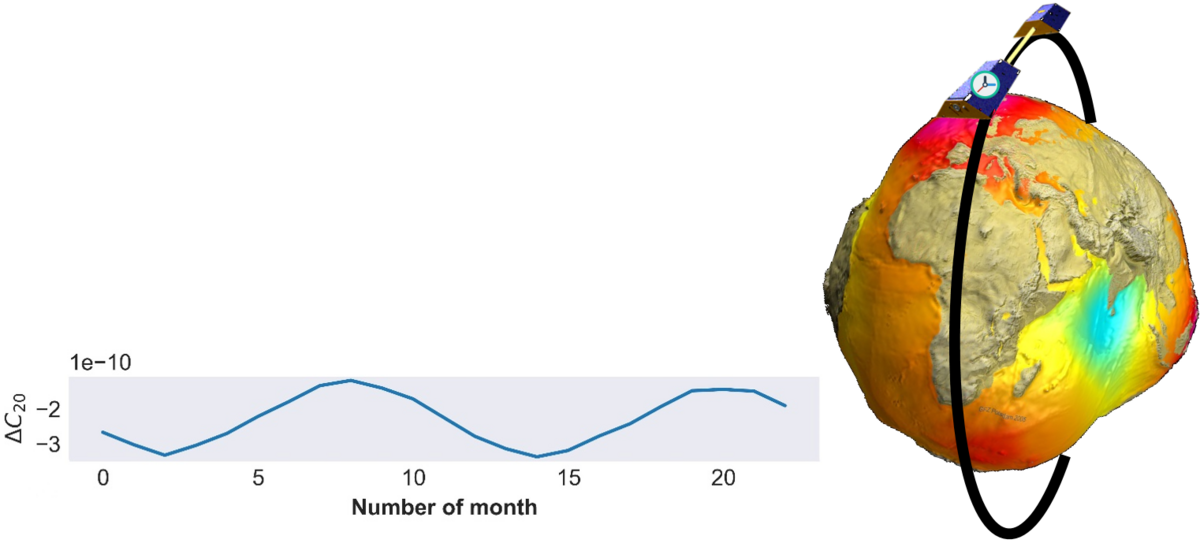GeoWerkstatt-Projekt des Monats November 2022
Projekt: Determination of Mass Variations on Earth Using Clock Networks
Forschende: M.Sc. Asha Vincent, Dr.-Ing. Akbar Shabanloui, Prof. Dr.-Ing. Jürgen Müller
Projektidee: Use highly accurate clocks to monitor mass variations in the Earth system.
According to Einstein’s general relativity theory, the frequency difference between two earthbound clocks reveals the gravity potential difference between the clock stations: Clocks tick slower if there is more mass and faster if there is less. Hence, clock comparisons can be utilized for determining spatial and temporal mass variations in the Earth system. This enables the new field of chronometric geodesy. For example, effects can be observed that occur as a result of climate change processes, such as ice melting in the polar regions.
In order to measure the variations on a specific place, a reference clock is needed. This clock can be placed either at a stable location on the ground (linked via optical fibers) or on a known satellite orbit. The atomic clocks are extremely precise: A clock with a fractional frequency uncertainty of 10-18, which means the clock is accurate to the 18th digit after the comma, can measure the difference in its ticking rate, if lifted by 1 cm in height corresponding to a gravity potential change of 0.1 m2/s2. Clock observations on the Earth surface contain the direct effect (due to mass change, e.g. ice melting) and the indirect effect (due to surface deformation, e.g. land uplift).


We could show by simulations, that high-performance atomic clocks provide promising results in detecting the gravity potential variations due to different mass change processes in the Earth system: Figure 2 illustrates how present-day ice-mass loss in Greenland is “seen” in the measurements of optical clocks. This trend causes signals of gravity potential variations of 1 m2/s2 over 10 years in the clock measurements.


 ©
ife
©
ife
Temporal variations of the Earth gravitational potential can also be determined by observing frequency changes of precise optical clocks in space, e.g., on-board of low-orbiting satellites.. At low orbits, one is most sensitive to mass changes on Earth.
Figure 3 shows an example of the seasonal variations of the Earth flattening expressed by the parameter ΔC20.. For this simulation, the GRACE-FO orbit with an altitude of 450 km was taken and an uncertainty of 10-19 with a sampling rate of one hour for the clock measurement has been assumed.


 ©
ife
©
ife


